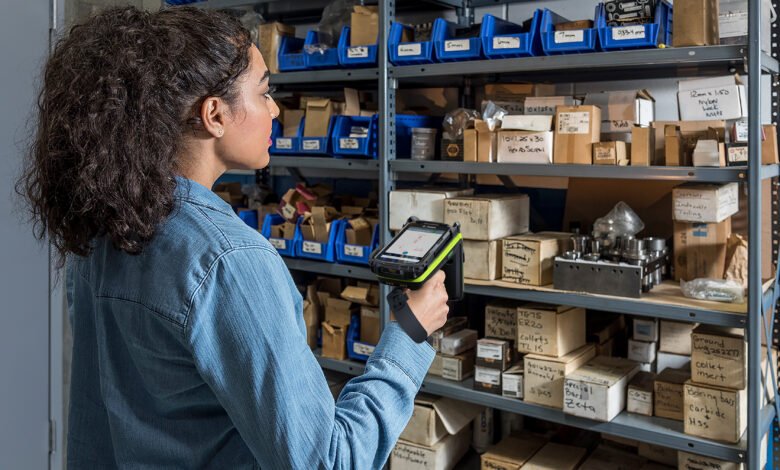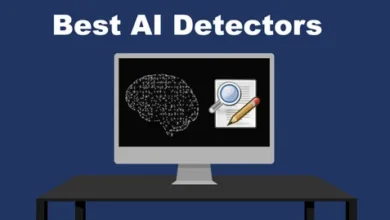The Technology Powering Modern Tracking and Efficiency

Summary:In the industries that demand accuracy, speed, and transparency, there has been a transformation of RFID readers. They are now seen as a fundamental requirement. Lowry Solutions is a partner in these transformations throughout the process of selecting the most suitable RFID scanners for the company, connecting them with the current system, and keeping the performance up to date through professional implementation and support. |
In the contemporary business world, speed and accuracy have become the most necessary attributes rather than the least demanded ones. The daily operations of organizations can involve up to thousands of items, and manual tracking of each isn’t practical and won’t be accurate either. This is the reason why RFID scanners have become irreplaceable.
In contrast to conventional barcodes, RFID (Radio-frequency Identification) is a modern technology that allows the scanner to collect data without the necessity of line of sight. It transmits the data through radio waves, recognizes many items simultaneously, and sends the corresponding information to connected systems. This technology not only permits but also accelerates decisions and increases workflow liquidity. However, RFID has become one of the least known but most effective modern tools in managing retail, manufacturing, logistics, and healthcare operations.
What Is an RFID Scanner?
An RFID (Radio-frequency Identification) scanner is a device that obtains the information saved on an RFID tag. The tags consist of microchips and antennas that send the signal to the scanner through radio waves. RFID scanners can read several tags at once, even if they are in a package or made out of different materials, unlike barcode scanners, which necessitate a direct line of sight.
RFID scanners are integrated into the broader tags, antennas, and data management software system. They come in different forms: handheld units, fixed readers mounted at entry points or conveyor belts, and even mobile devices integrated into tablets or industrial computers.
Here’s How RFID Scanners Work
RFID technology uses electromagnetic fields to communicate between the tag and the reader. A tag that comes into the scanner’s range gets its power from the scanner’s radio waves and sends the reader the information it has been storing.
The two main varieties of RFID tags are passive and active.
- Passive tags work by taking energy from the reader’s radio waves. They are small, affordable, and perfect for tracking inventory in large numbers.
- Active tags have a built-in battery that allows them to send signals over a much longer distance. Hence, these tags can be used in vehicle tracking, asset monitoring, or critical range situations.
The moment data is captured, it is handed over to the linked software, which takes care of the records in real time. This type of automation reduces the need for human involvement, minimizes errors, and grants constant visibility over the movement of assets or stock.
RFID Scanners vs Traditional Barcode Systems
Even though barcodes are still common, RFID systems have a lot to offer in terms of advantages that outweigh their drawbacks, like being much faster, more flexible, and more efficient. The operation of barcode scanners is totally dependent on the visibility of the label, while RFID scanners can identify a large number of items at the same time, even when their labels are not visible.
A good example is that a worker in the warehouse equipped with a portable RFID reader can not only cross over a stack of products but also instantly log each product right inside the range of the reader. The shifting of manual processing to electronic processing has a pronounced effect on reducing counting or auditing time. Besides, RFID technology saves it all on a tag containing product details, serial numbers, and maintenance history. Thus, more data insights are available to the decision-maker.
Applications Across Key Industries
One of the main use cases for RFID technology has been efficient asset management in different industries. It has completely changed how organizations handle their assets regarding tracking, managing, and securing. The application areas vary from retail, hospitals, and manufacturing to RFID scanning, where it is instantly visible, human error is minimized, and operations are made easier. Besides, RFID opens up a modern-day data exchange scenario where physical objects and digital systems are correlated during the entire process, thus leading to a more accurate, productive, and informed decision-making at every stage.
Retail and Supply Chain:
Real-time stock monitoring is made possible by the utilization of RFID scanners, which ensure the continuous availability and the right placement of products. Retailers can cut back on the number of stock-out incidents, manage returns seamlessly, and study the buying patterns to adjust the inventory levels accordingly.
Manufacturing:
RFID scanners monitor the flow of raw materials, semi-finished products, and finished goods in production. This not only assures traceability and adherence to regulations but also contributes to the implementation of lean manufacturing by minimizing equipment downtime and avoiding the misplacement of materials.
Healthcare:
Hospitals utilize RFID scanners to monitor medical supplies, laboratory samples, and even patients. Healthcare providers can improve safety and keep accurate records without extra administrative work by making sure the right item is in the right place at the right time.
Warehousing and Logistics:
RFID scanners improve receiving, put-away, and dispatch processes. Forklift-mounted readers or fixed gate scanners identify goods as they move in and out of storage, keeping the system updated automatically. This helps logistics teams maintain full visibility over shipments and reduces the chance of loss or misplacement.
Security and Access Control:
RFID scanners on employee ID cards and access systems are becoming more popular with companies. Scanners allow only authorized users to gain instant access to the secure zones and, at the same time, keep electronic logs of all access activities.
Choosing the Right RFID Scanner
Selecting the most appropriate RFID scanner relies on its location and method of use.
- Hand-held scanners are perfect for mobile operations like counting stocks, checking, and inspecting in the fields.
- Fixed-mount scanners perform excellently in automated environments such as the loading areas or the production line.
- Wearable scanners increase flexibility and productivity in a high volume operation.
Other factors that should be taken into account are the reading distance, frequency range (LF, HF, or UHF), durability against environmental conditions, and software compatibility. An industrial-grade scanner possessing sturdiness should triumph over dust, vibrancy, and temperature quality variations while still delivering quick and precise readings.
Benefits of RFID Scanning in Modern Operations
RFID systems are different from manual or barcode methods in that they can capture data automatically, thus giving continuous and uninterrupted visibility throughout the entire production and distribution process. This technology is not limited to warehouses only but hospitals as well, facilitating faster workflows, improved accountability, and a more detailed daily operations picture. The following are the main advantages of RFID scanning in today’s business environments:
- Faster data capture: With the help of RFID scanners, it is possible to take readings of hundreds of tags in seconds.
- Fewer manual errors: The use of machines in repetitive data collection means that there will be less chances of human errors.
- Improved traceability: The digital logging of every asset or product facilitates the audit process.
- Real-time visibility: The live updating of data provides better support in decision making and control of workflow.
- Scalability: The RFID systems are designed in such a way that they can be gradually enlarged along with the business’s needs, without incurring huge structural changes.
These benefits working together help organizations to stay agile and competitive in environments that require both speed and accuracy.
Lowry Solutions: Building Smarter, More Connected Operations
The use of RFID scanners is mandatory, they are the backbone of smart, connected operations. The scanners make complicated tracking a seamless and simple procedure, and as a result, speed, accuracy, and visibility come to the entire supply chain.
Lowry Solutions provides businesses with stocks and sales and offers the necessary overall, trusted hardware, customized software, and expert integration support for the full usage of RFID technology. Our professionals collaborate closely with the customers to come up with solutions that address real-life problems, for example, from simple in-house stock monitoring to large-scale automation in factories.
Through years of experience in the field of identification and data capturing, Lowry Solutions fortifies companies to run their business with more confidence in themselves as well as in control, thereby at the same time making the process quicker, smarter, and more adaptive to the future challenges than ever before.
FAQs
Q1: What Are the Differences Between the RFID and the Barcode System?
A1: RFID is an automatic identification and tracking technology that works through radio frequency, on the contrary, barcode works with optical scanning. Moreover, RFID can read a multitude of tags simultaneously, and the visibility of tags to the scanner is not a condition.
Q2: Can RFID Scanners Read Through Packaging or Containers?
A2: Yes, RFID scanners are able to detect tags through almost all non-metallic materials very well, such as cardboard, plastic, and fabric.
Q3: Are RFID Scanners Suitable for Outdoor Environments?
A3: Most of the industrial-grade RFID scanners are built to be durable enough for outdoor conditions and can handle dust, rainfall, and extreme temperature changes.
Q4: What is the typical read range of an RFID scanner?
A4: The range depends on the tag type and frequency. Passive tags usually reach a few meters, while active tags can extend up to several hundred meters.
Q5: What Role Does Lowry Solutions Play in RFID Deployment?
A5: Lowry Solutions is there to provide total support, starting from the selection of the most appropriate RFID scanners down to the installation of the system, software integration, and support. Our method allows companies to establish accurate and efficient tracking with little disturbance to their daily operations.










